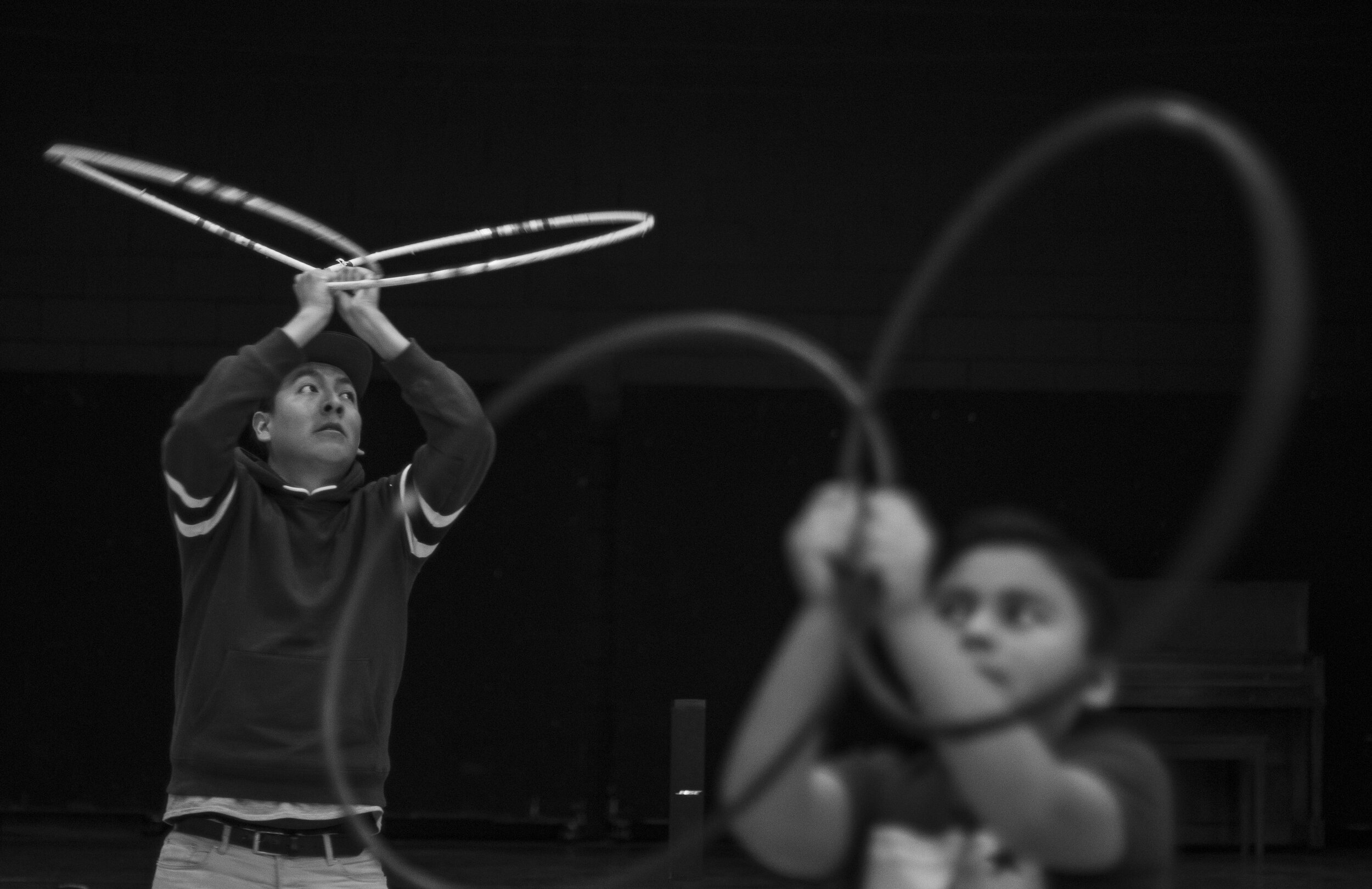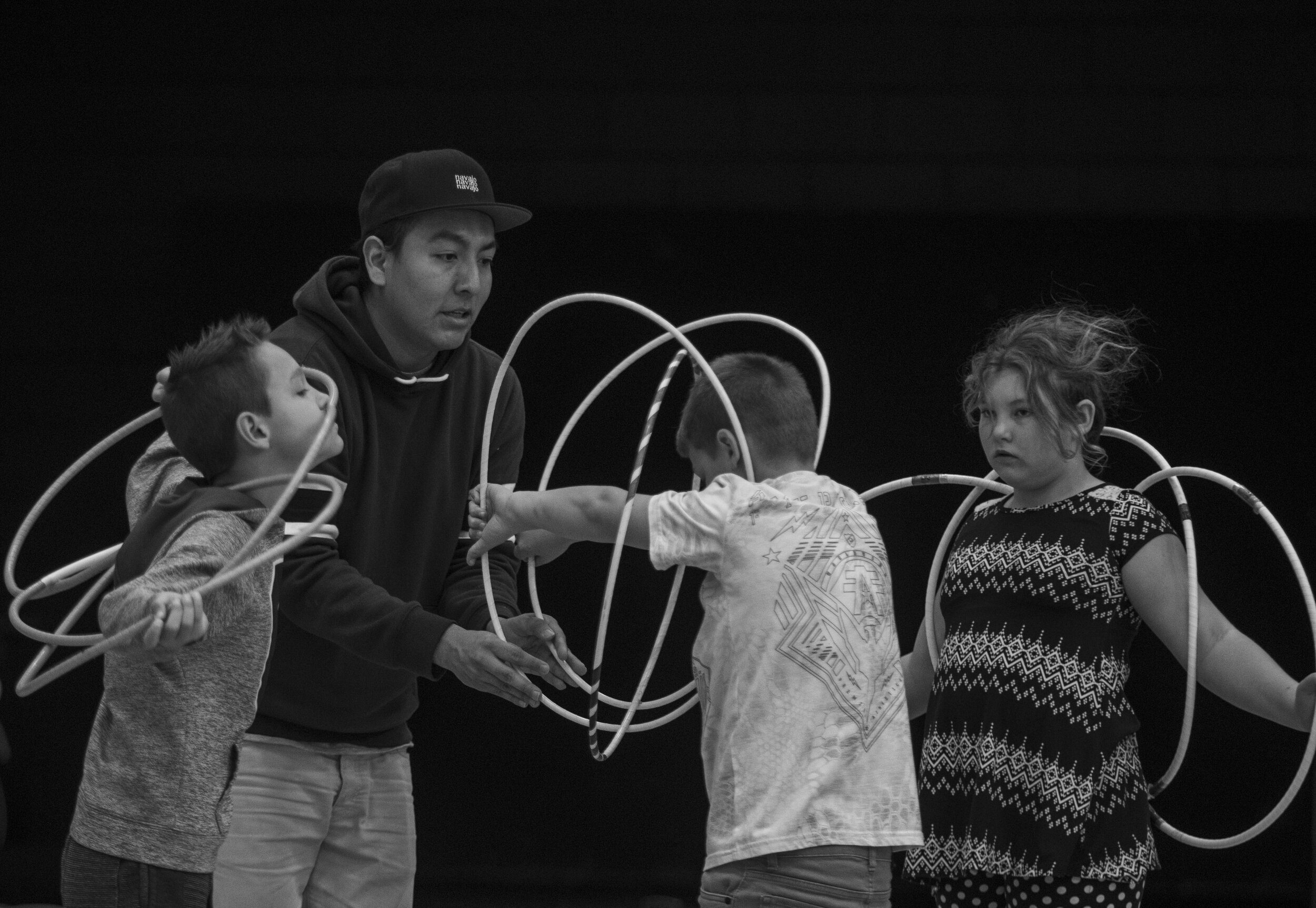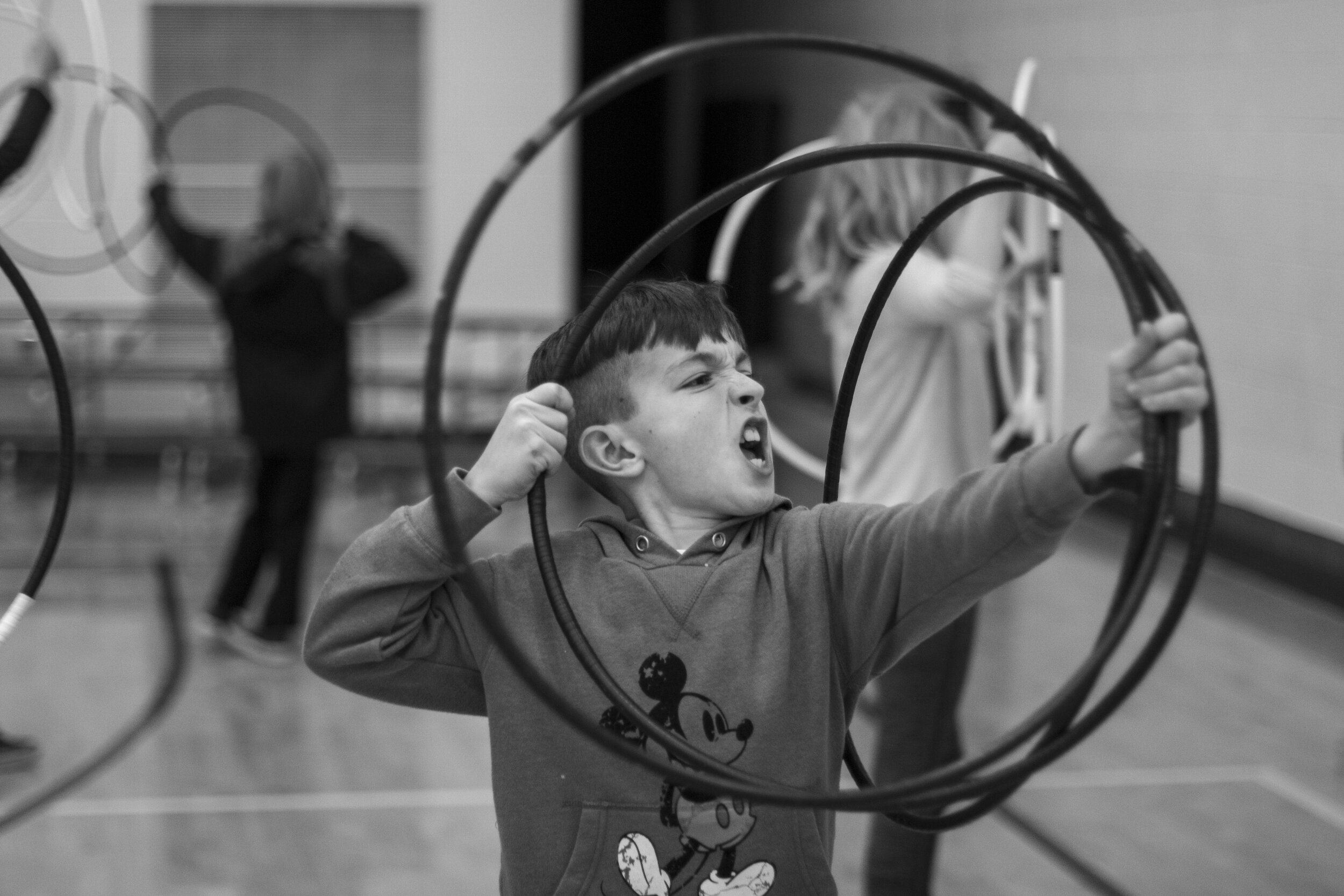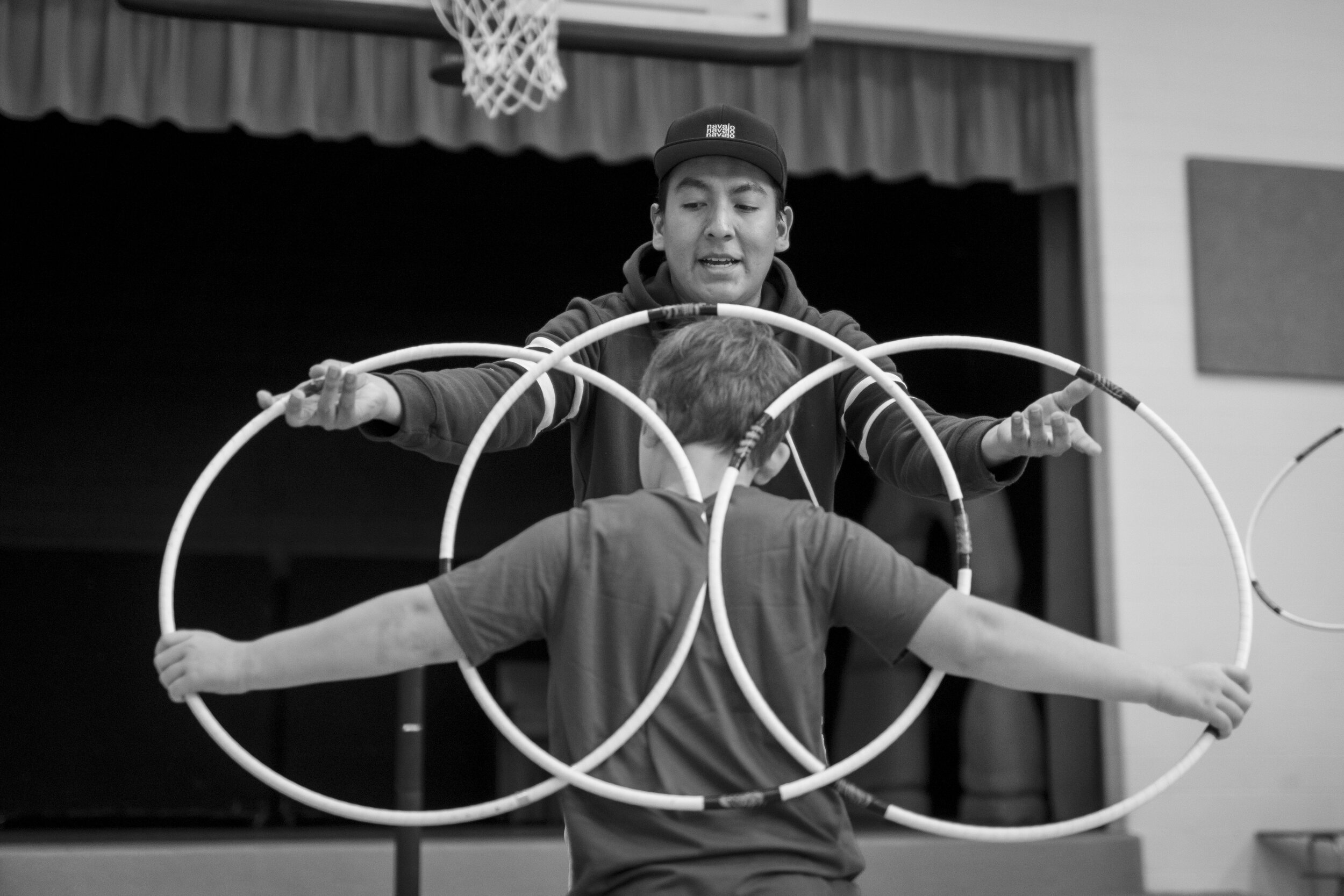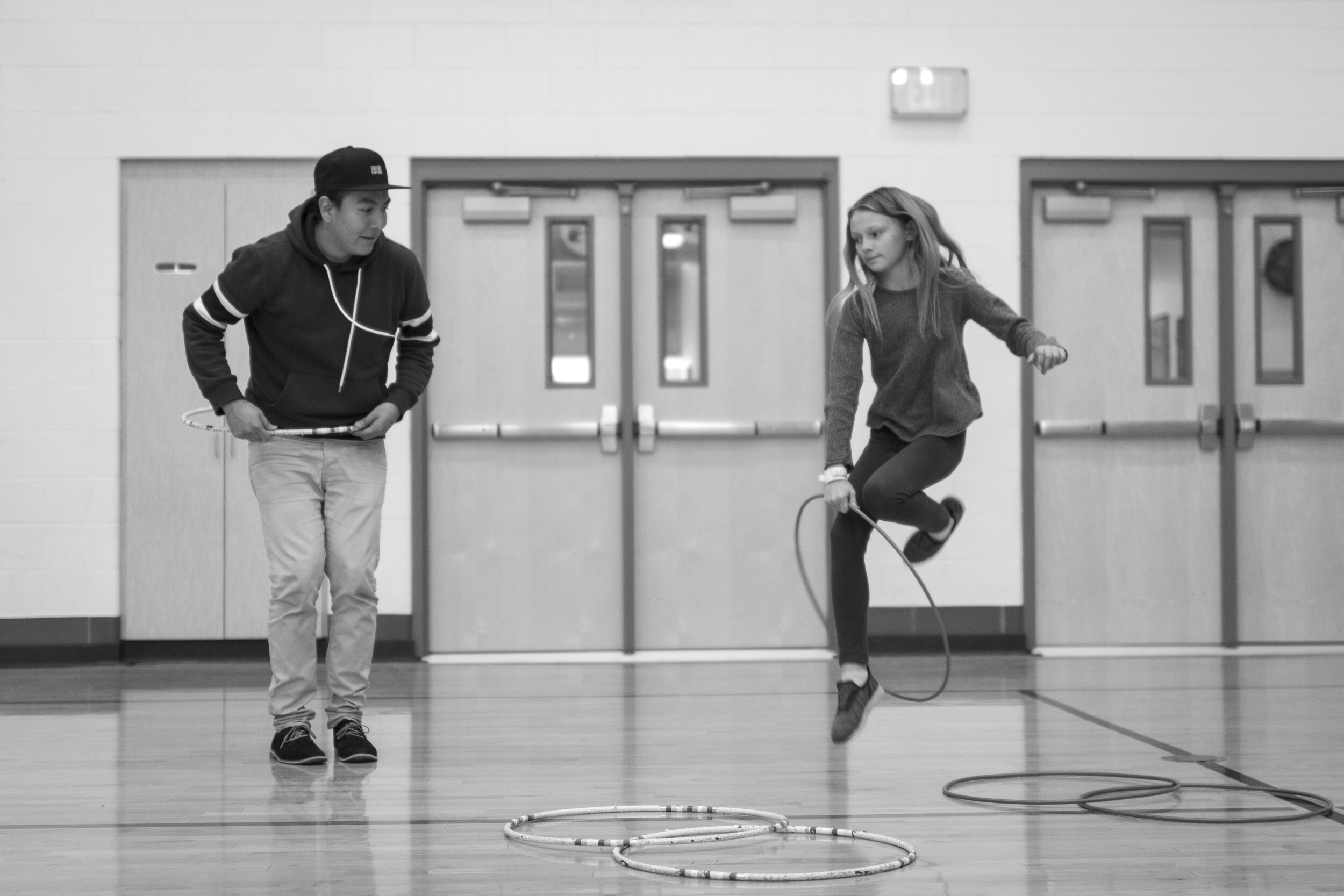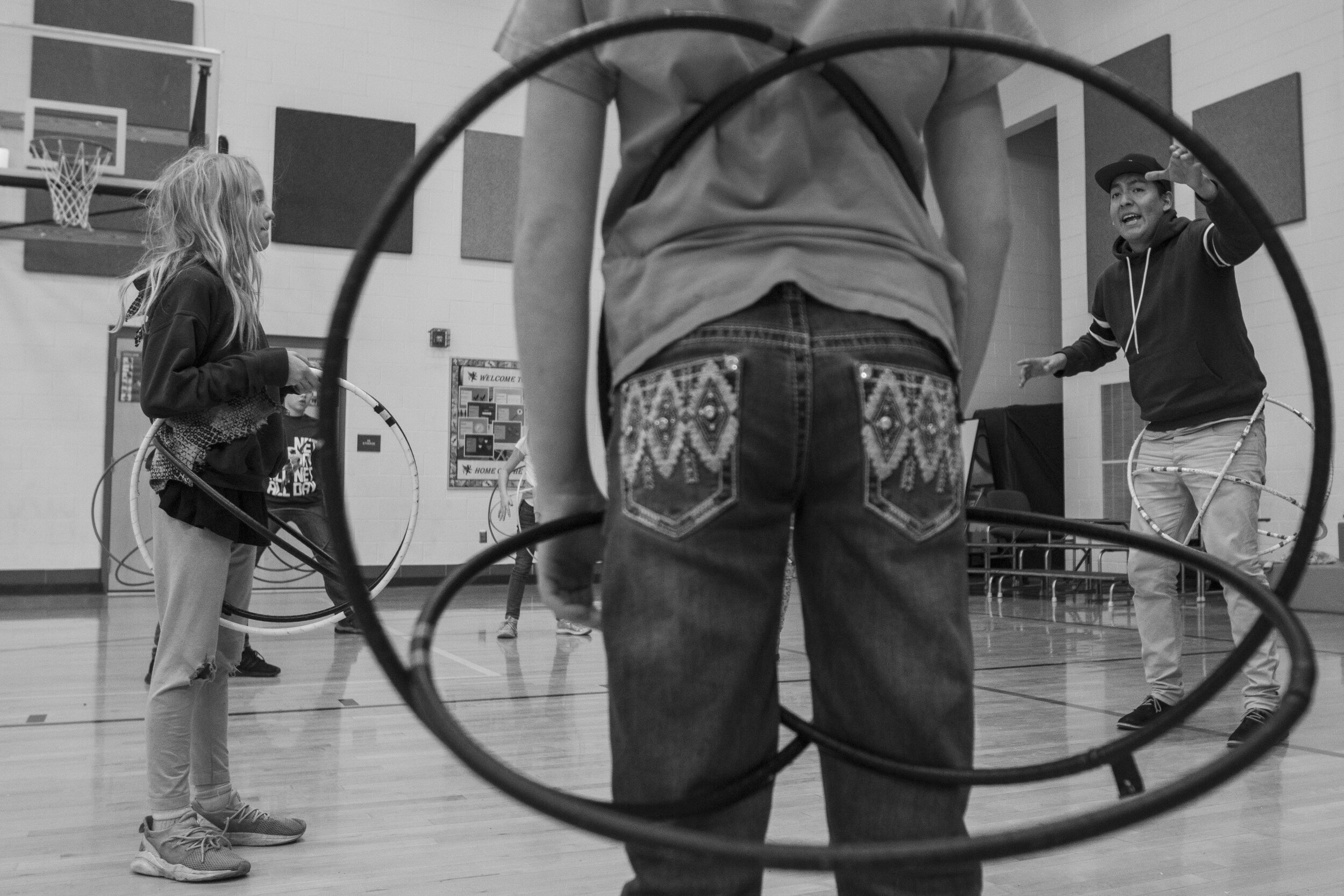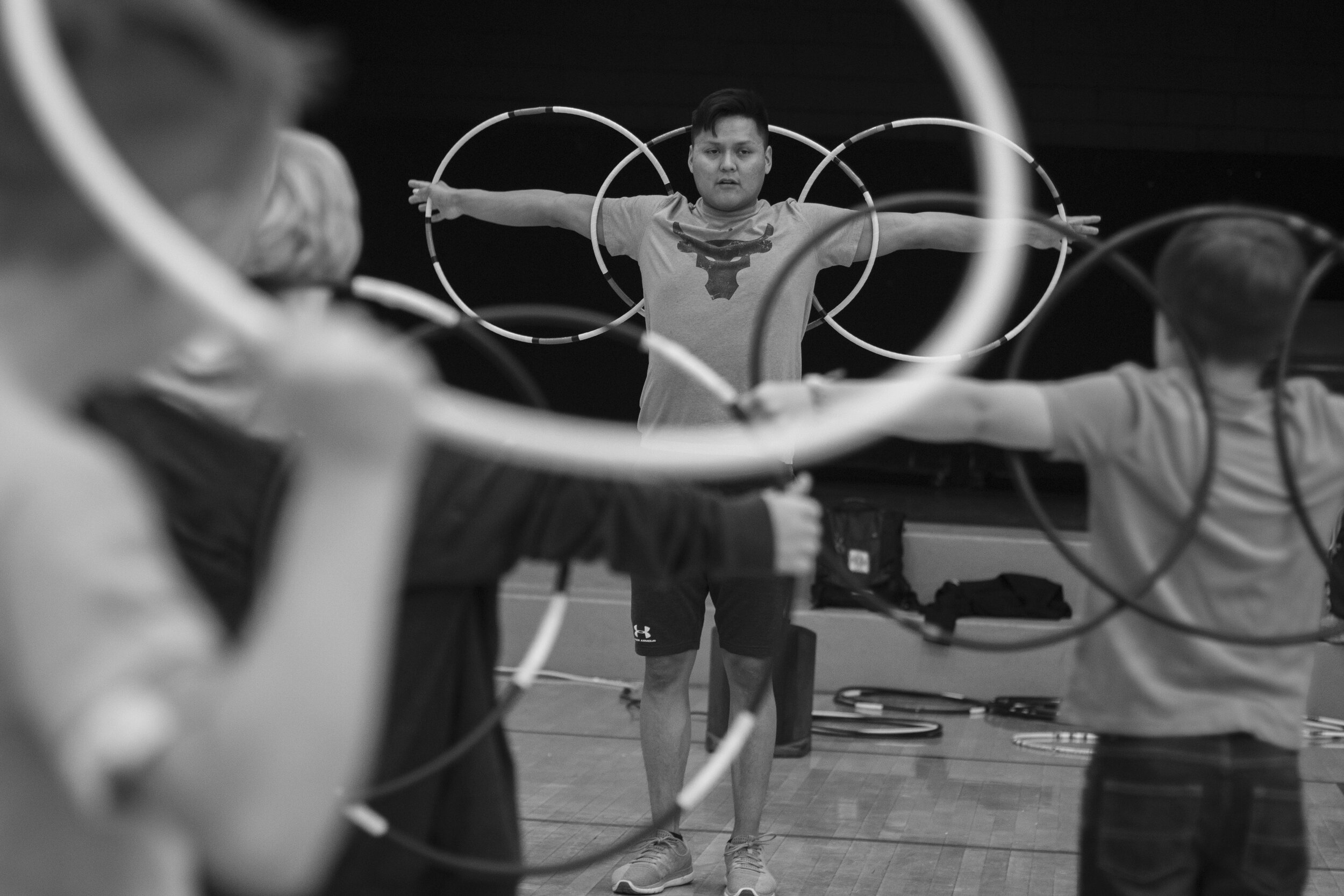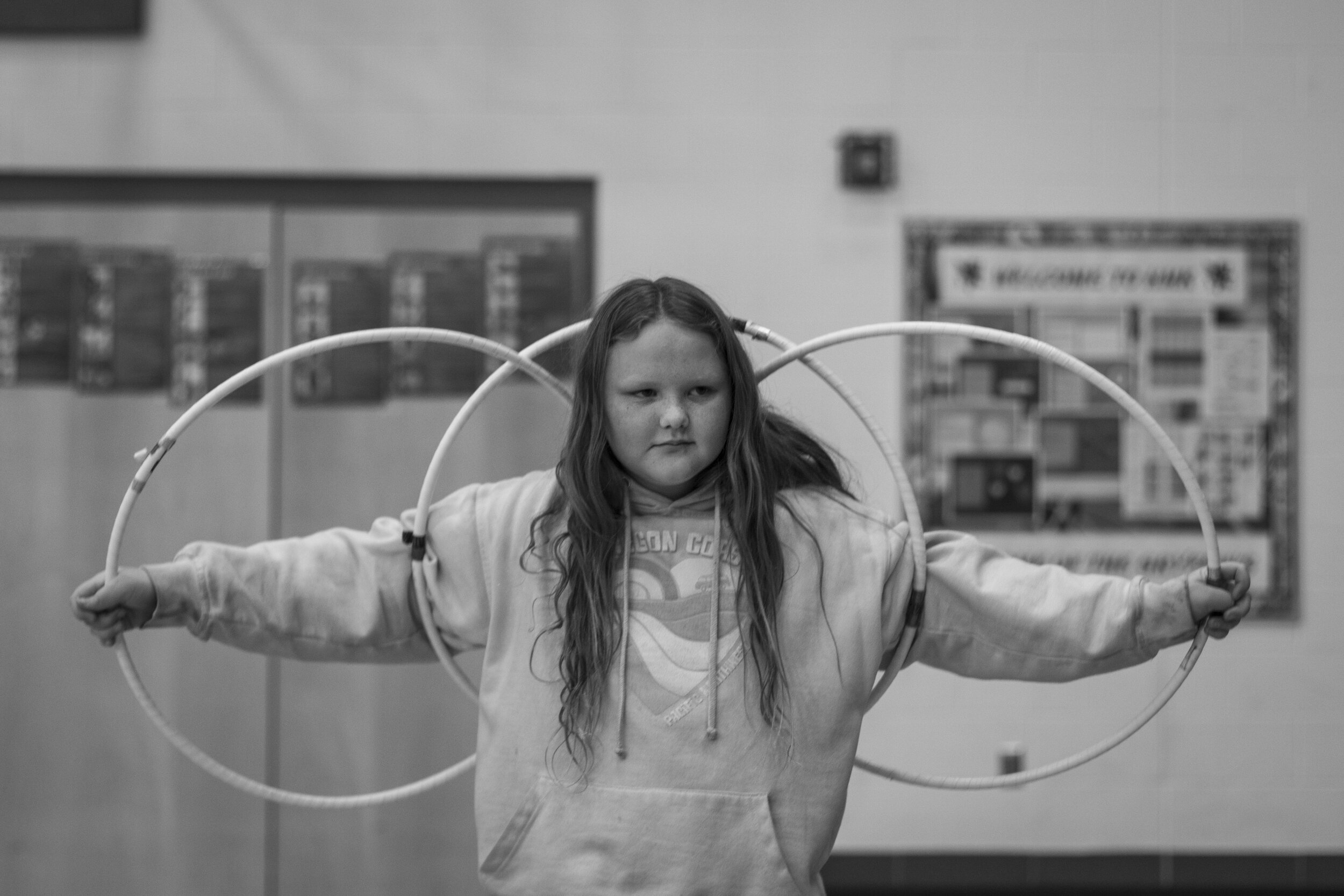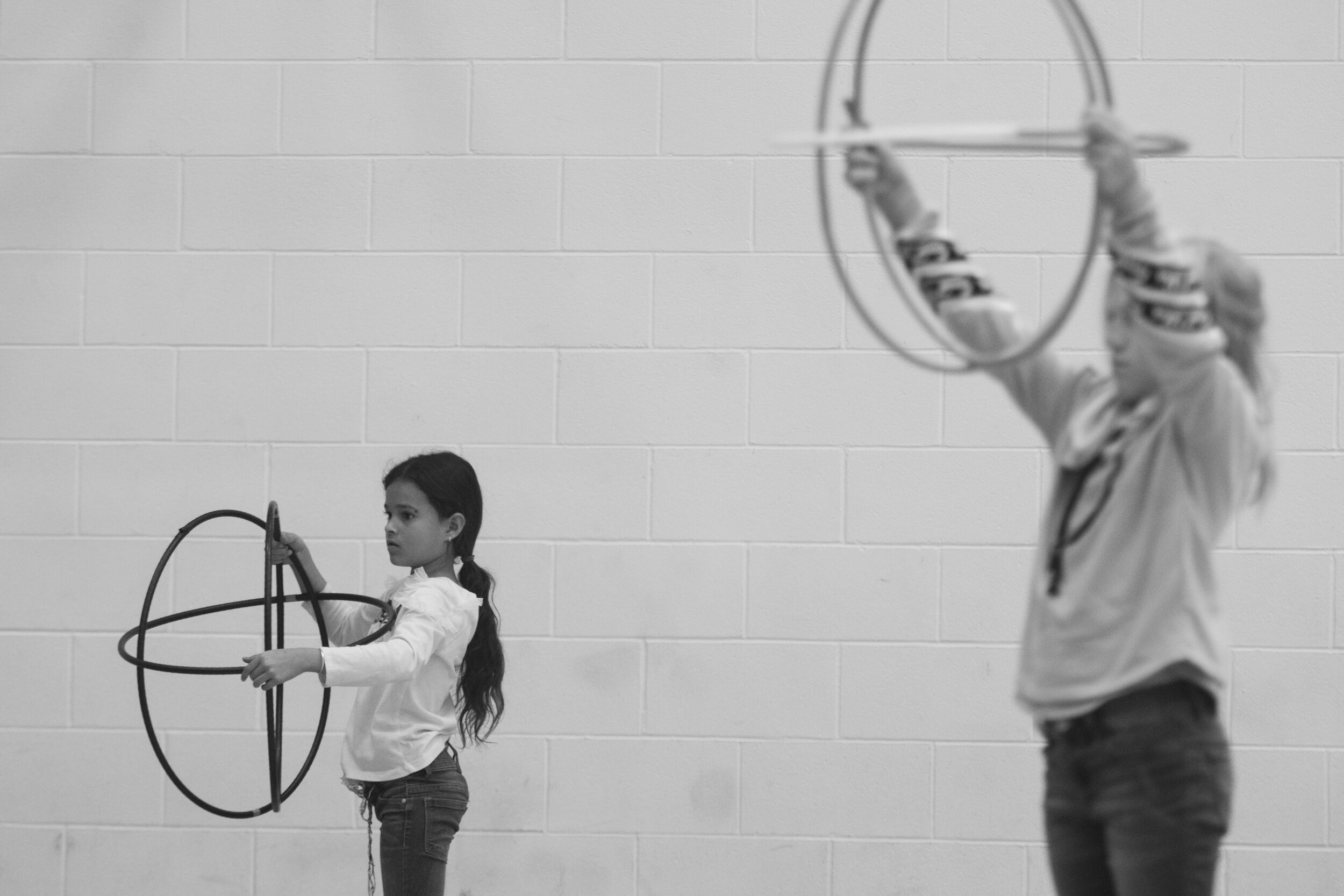“Try to hold your world with two hands, even if it feels like it might fall apart, it wont’ fall apart,” Navajo hoop dancer Patrick Willie told a class of fourth graders at the Helen M. Knight Elementary School in Moab, Utah. Willie and fellow hoop dancer Joseph Secody from Page, Arizona, both champion hoop dancers, met up in Moab to teach a weeklong workshop to the entire fourth grade class as part of their curriculum for Native American Heritage month.
Secody described the workshop as, “A way of having us be recognized as Native Americans, that we are still here. We are trying to break the stereotype of how people see Native Americans. People still think that we live in teepees or out in a village in the middle of nowhere.” Willie agreed, adding “ Hoop dance is a cool and fun dance that also uses your imagination. I see hoop dance as a vehicle to share culture.”
Five classes with a total of 114 students spent an hour a day learning the fundamentals of hoop dancing. The number of hoops increased by one a day until the third day. The children learned to make meaningful shapes with the hoops, including a butterfly with flapping wings, an eagle, a bow and arrow, and a globe.
Willie and Secody spent the week wading through small herds of nine year olds, spinning and flailing hoops in all directions, Patiently, they helped the kids one by one one by one perfect their forms. “Who needs help?” was met children flocking to figure out just how to hold the hoop in place, or the right angle to make butterfly wing flap smoothly.
“I’m doing hoop dancing with the Native Americans,” said Rozalyn Krist, 9 “I think it’s really fun and I’m really happy that I get to do it. My favorite part is learning tricks, like the eagle, and the ice cream scoop, where you do a figure 8.”
The eagle, formed with three hoops in a row along one’s back, forming outstretched wings was universally popular. The gym where the workshop took place was full of swooping, spinning raptors, rivaled somewhat by the bow and arrow shape which prompted a playful skirmish.
The workshop concluded with a performance for parents. Kelvin Rawson ,9 announced, “We have a performance tomorrow, with only three days of training! Usually it takes a couple years”
“Maybe the best time to learn hoop dancing is when you are a kid,” Willie speculated “Mostly because of your imagination. Kids are always coming up with new ideas for formations that I haven’t thought of. I heard a few new ones this week, like a koala, for a formation the looks like Mickey Mouse.” Other shapes the kids saw were a diaper and a trashcan.
In a school like the one the workshop was held, the majority of the kids were not Native American, but Willie said there were a few Native kids, “its neat, because you can see how proud they are to be Native American and that they are learning something from their culture. Everyone else seems to enjoy the dance, but the native kids specifically seem to be the proudest.”
